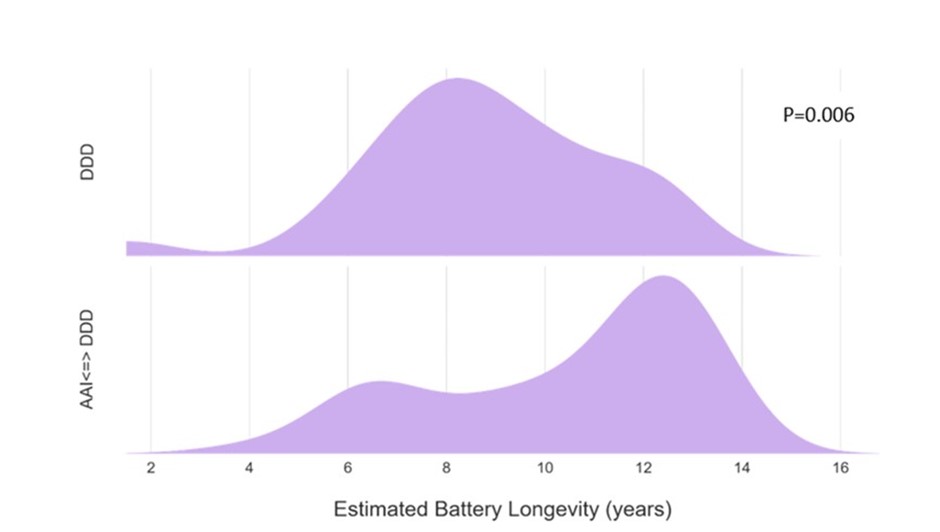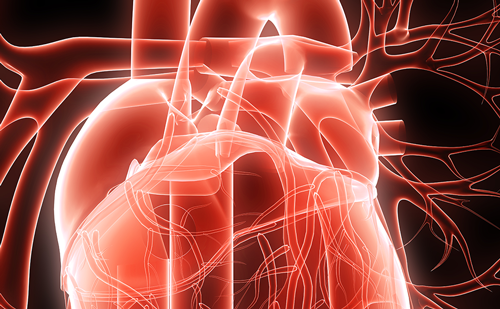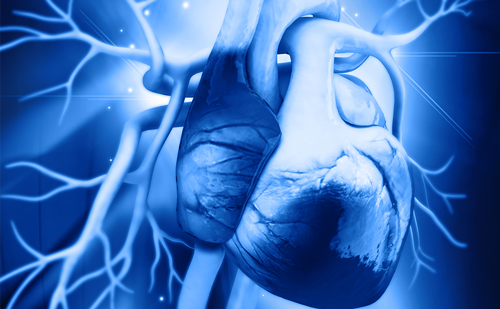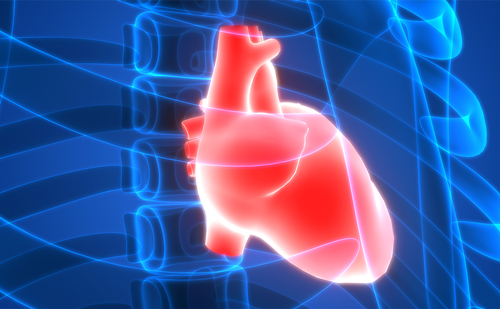Background: The way that dual chamber pacemakers are programmed can affect the estimated battery longevity. This remaining battery life is calculated by the device itself; it is unknown how specific variables such as reduced ventricular pacing modes/algorithms and rate response effect the estimated battery longevity. This therefore forms the primary aim of this study. Whilst current research into the incidence of atrioventricular block in patients with sick sinus syndrome appears reliable, there are inconsistencies amongst studies. Furthermore, the issue of unnecessary right ventricular pacing in this cohort is yet to be challenged consistently. As a result, this study further identifies changes in right ventricular pacing percentage over time. Both aims were investigated in patients with dual chamber pacemakers, implanted for sick sinus syndrome with no atrioventricular block.
Methods: This single centre, retrospective, observational cohort study includes all patients with dual chamber pacemakers implanted for sick sinus syndrome between 2015–2020 at Wythenshawe Hospital. Inclusion criteria was having documented follow-up data at both 6 weeks and 2 years post implant.
Statistical analysis on the data set was commenced using a Kruskal Wallis test to identify any significant effect on battery longevity as a result of different programmed modes. Following this, multiple Mann Whitney tests (post-hoc analysis) identified specifically which of the programmed modes had significant effects on battery longevity. Furthermore, a Wilcoxon signed rank test was used to identify differences in right ventricular pacing percentage between 6 weeks and 2 years post implant.
Results: The primary aim, investigating effects of programmed modes on estimated battery longevity, found differences in some of the comparisons between modes. Following a significant Kruskal Wallis result (p<0.001), a significant difference in battery was then found between AAI <=> DDD compared with AAIR <=> DDDR (n=99; p< 0.001), and secondly between AAI <=> DDD and DDD (n=79 p=0.006) as shown in the density curve below (Figure 1). However, there was statistically similar longevity between DDD and DDDR (n=66 p=0.352), and between AAIR <=> DDDR versus DDDR (n=86: p=0.568).
Furthermore, the secondary aim of identifying changes in right ventricular pacing percentage used a Wilcoxon signed rank test, identifying a significant increase (n=174; p=0.001) between 6 weeks and 2 years post-implant.
Conclusion: Different programmable modes in dual chamber pacemakers can significantly affect the estimated battery longevity. The most prominent finding and significant comparison demonstrates that patients programmed DDD could have an increased estimated battery longevity (by 1.75 years) if re-programmed with a reduced ventricular pacing mode (AAI <=> DDD) enabled. Furthermore, where these modes/algorithms are not appropriate for the patient, DDDR should be enabled. No significant difference in battery was identified between DDD and DDDR (enabling rate response).
Crucially, the study also found that right ventricular pacing percentage significantly increases over time (11.4% to 16.5%) confirming the suggestions of current research that implanting dual chamber pacemakers for sick sinus syndrome has the potential to pace the ventricle unnecessarily. Careful consideration of reprogramming is vital. Weighing up achieving optimal haemodynamic and quality of life for patients, whilst also preserving battery longevity must be considered. ❑
Figure 1








